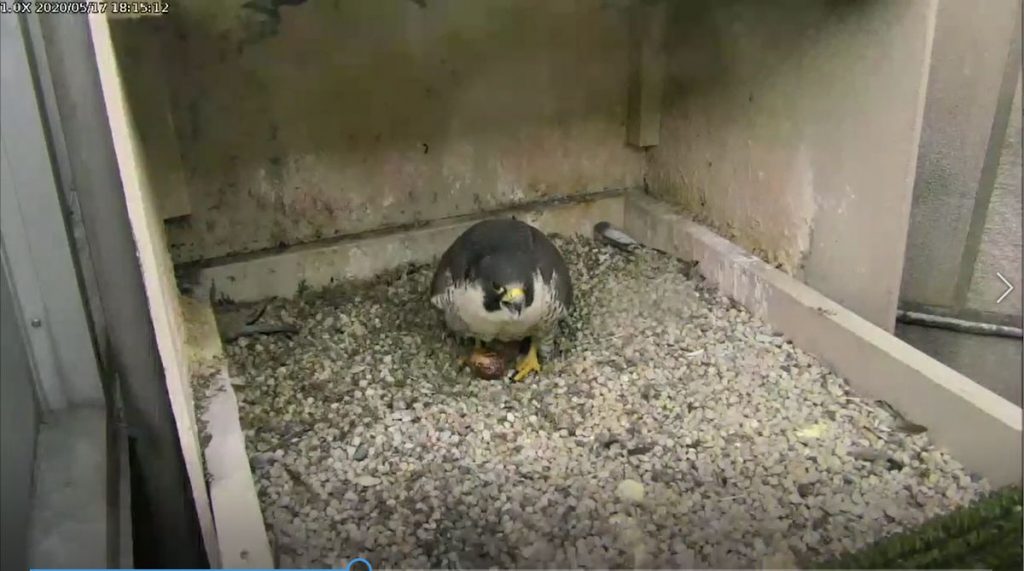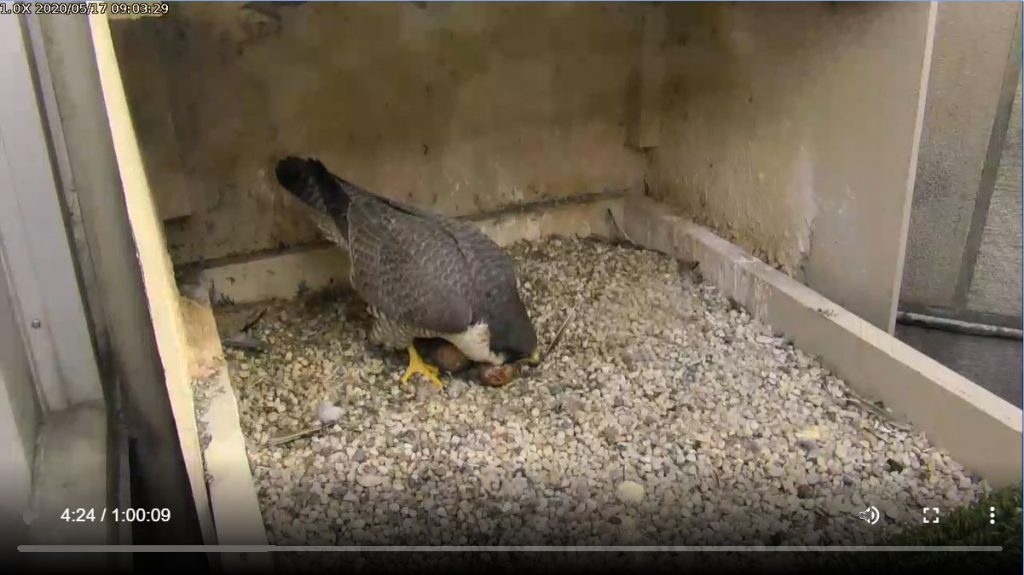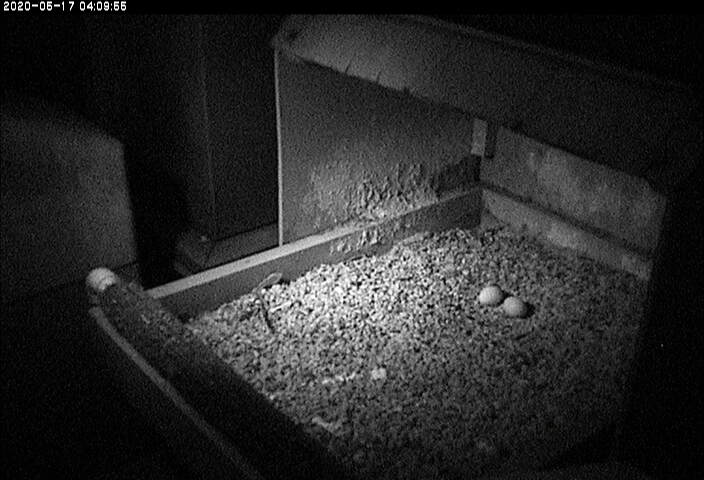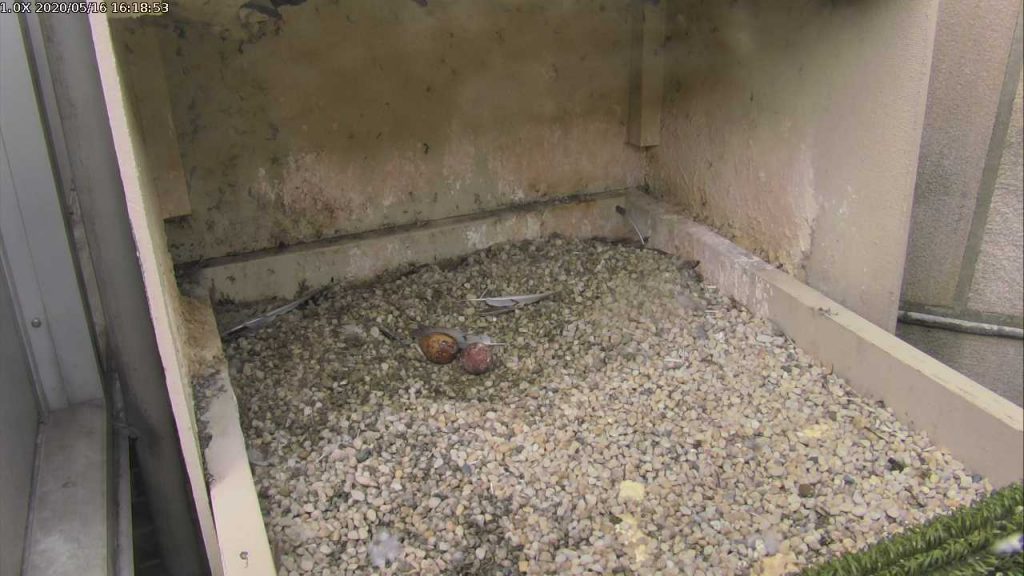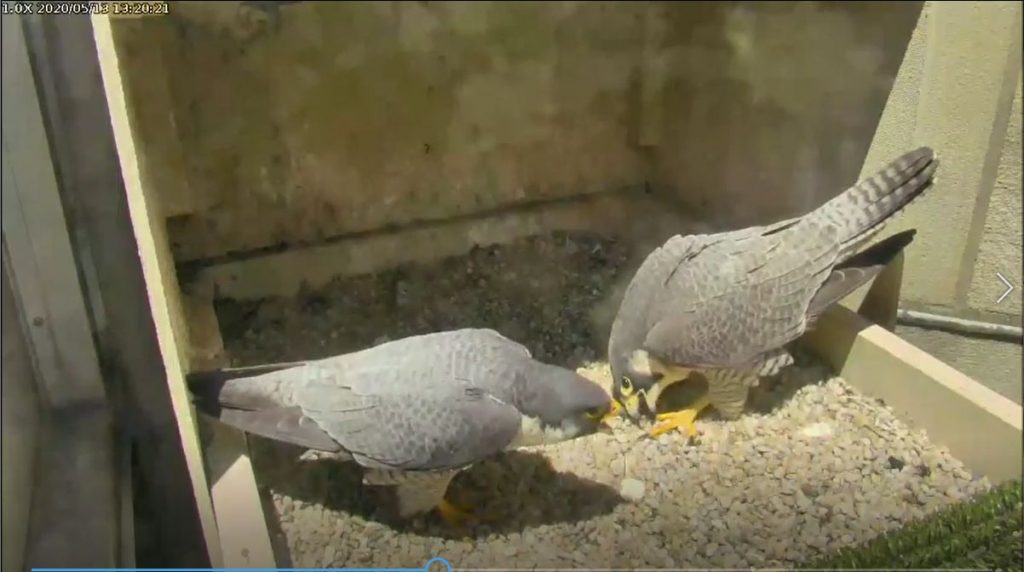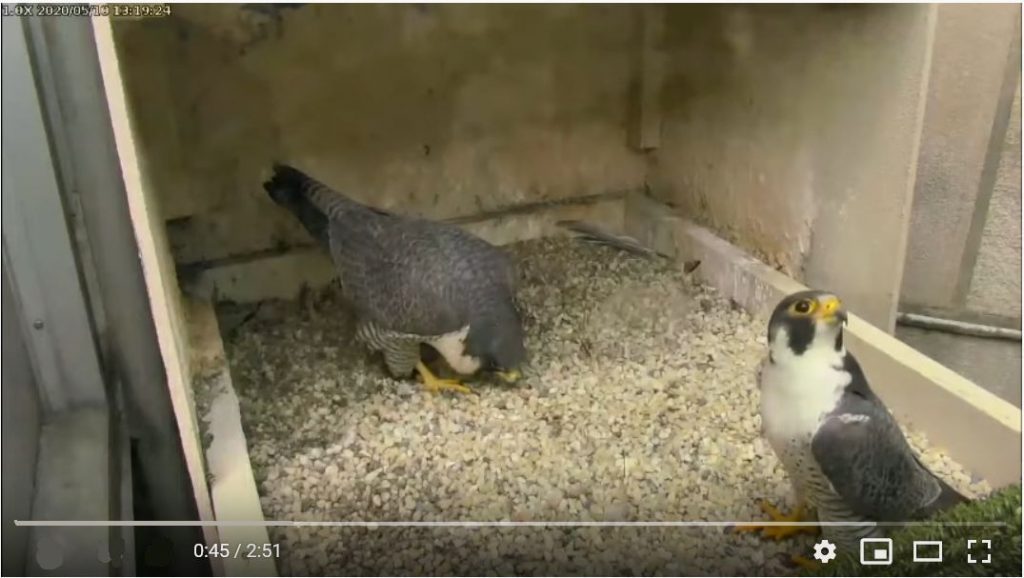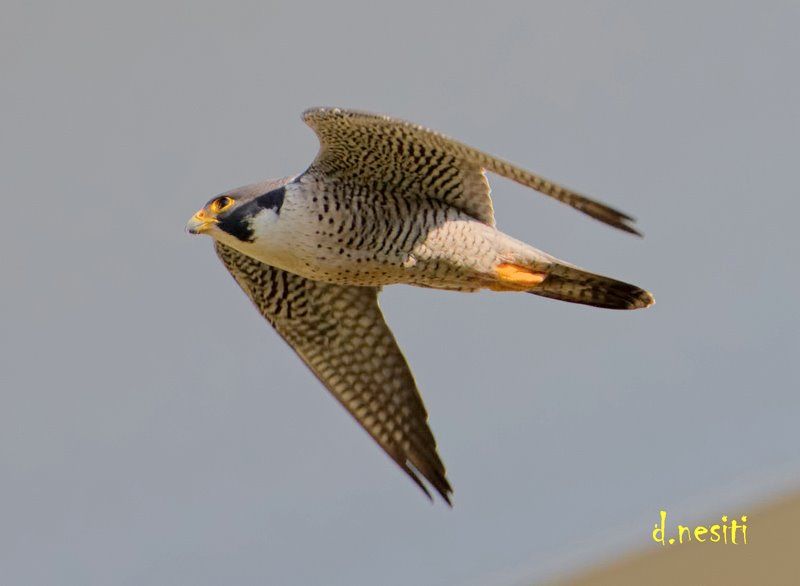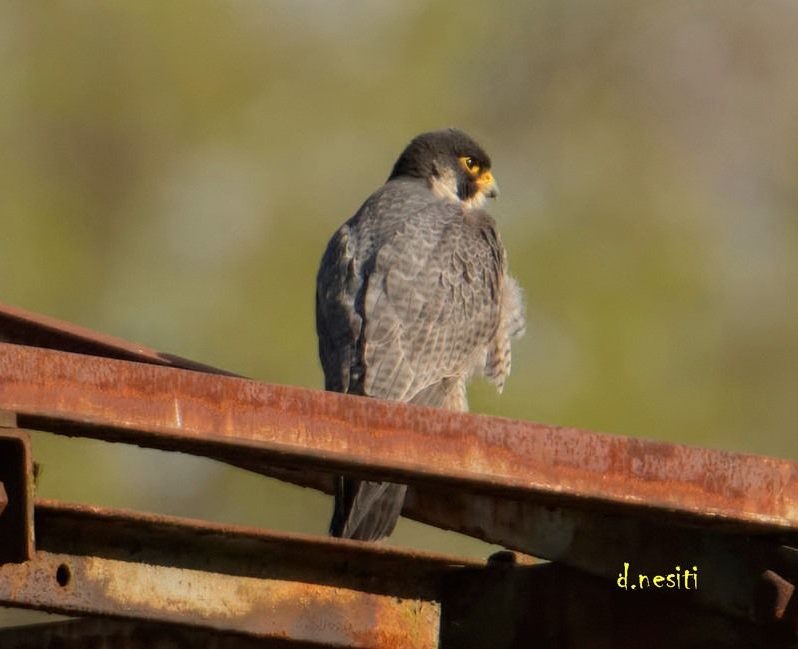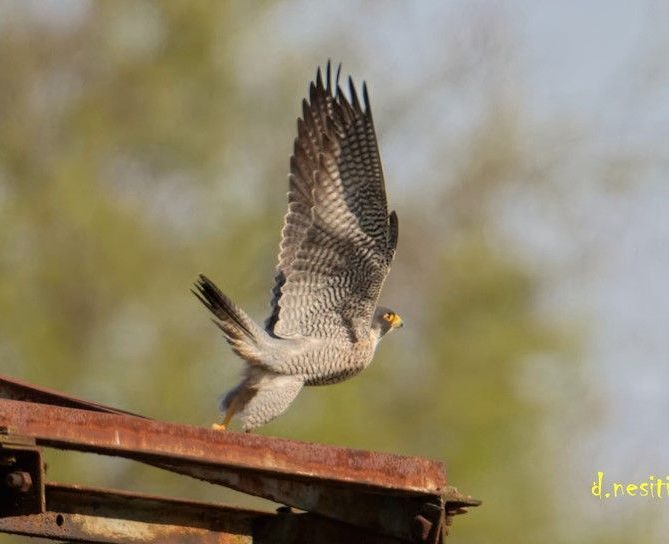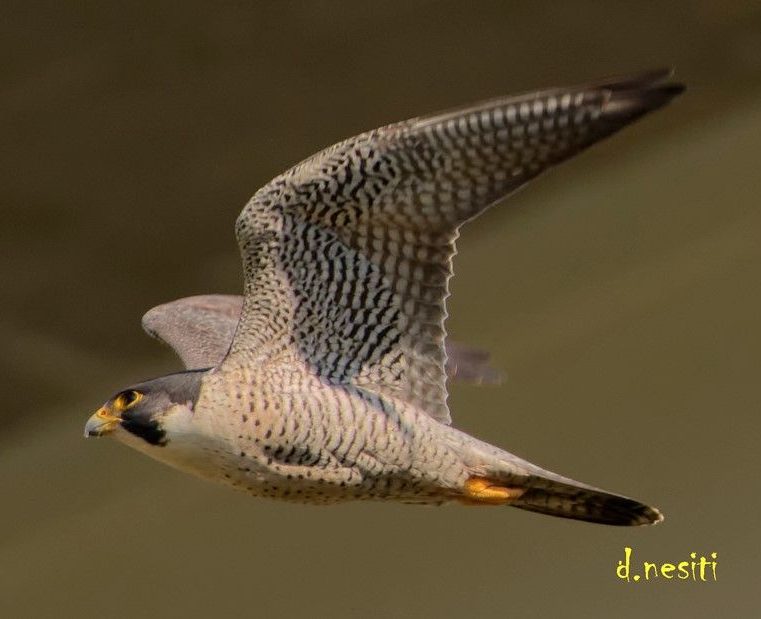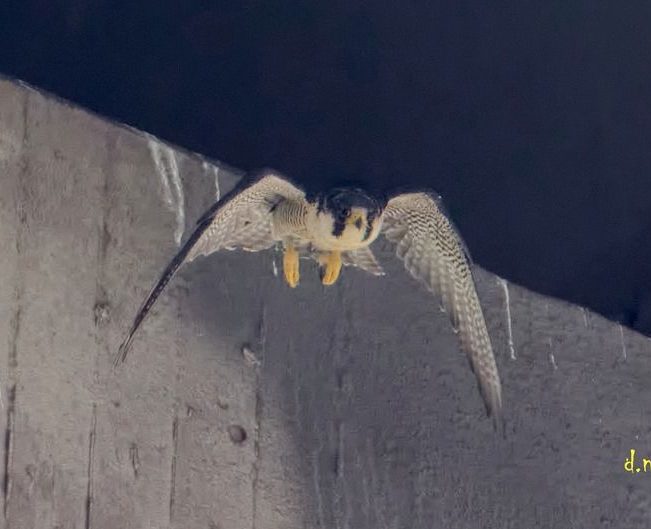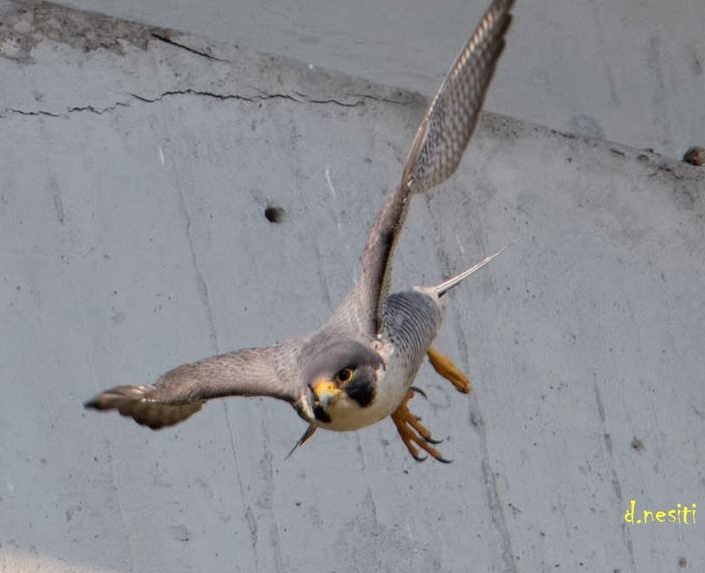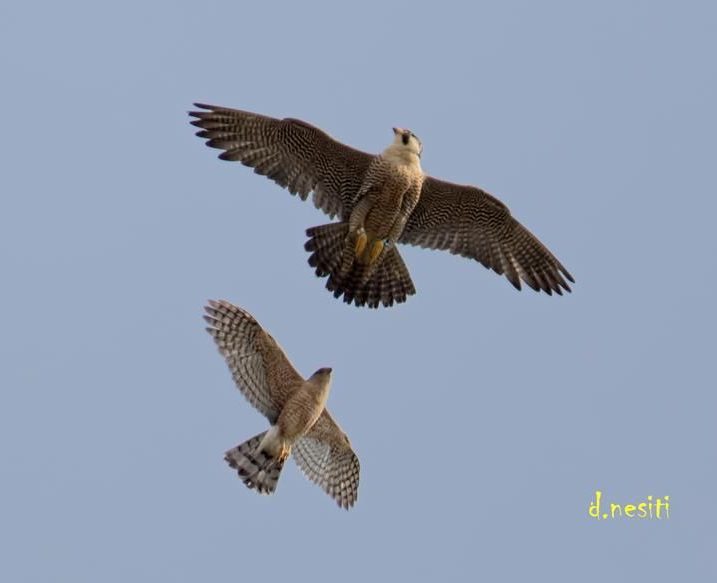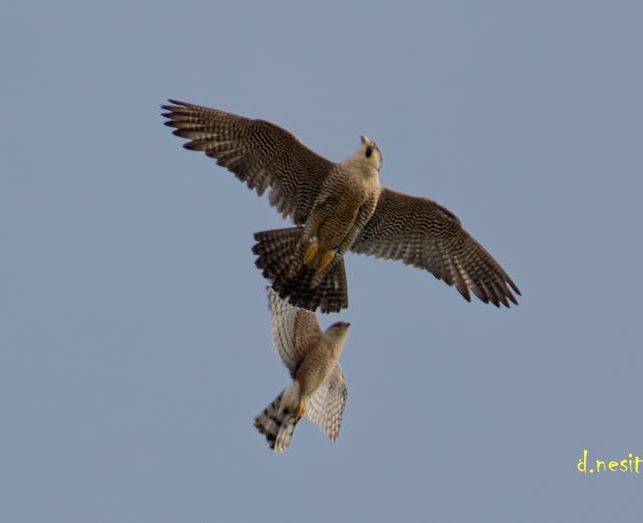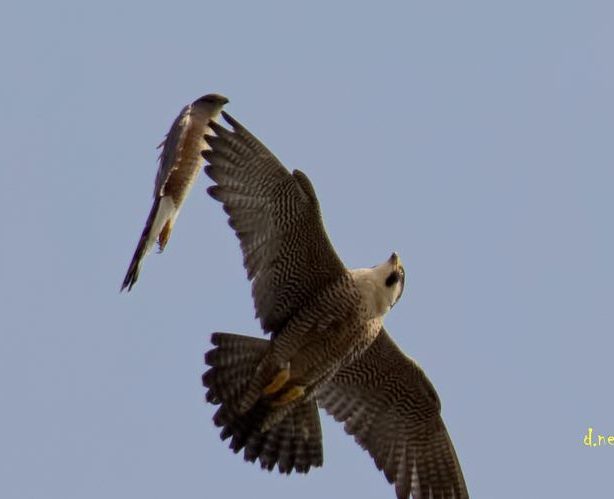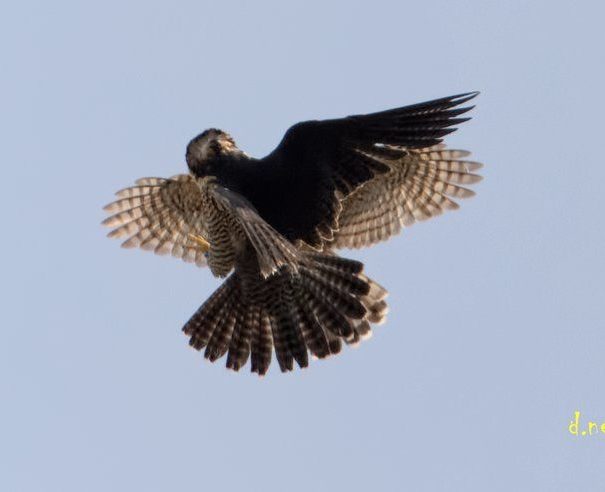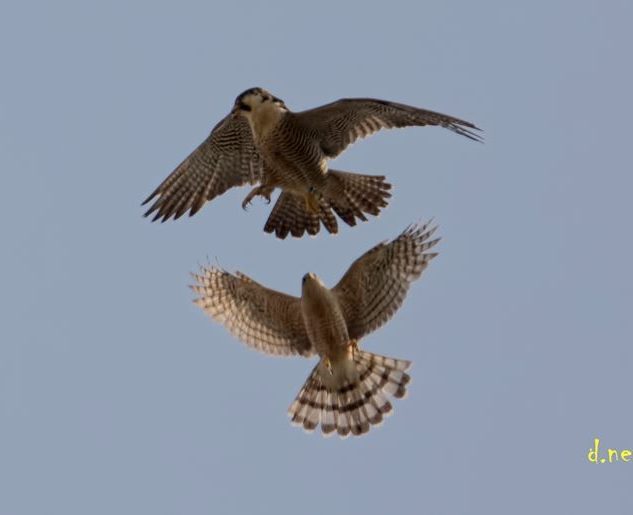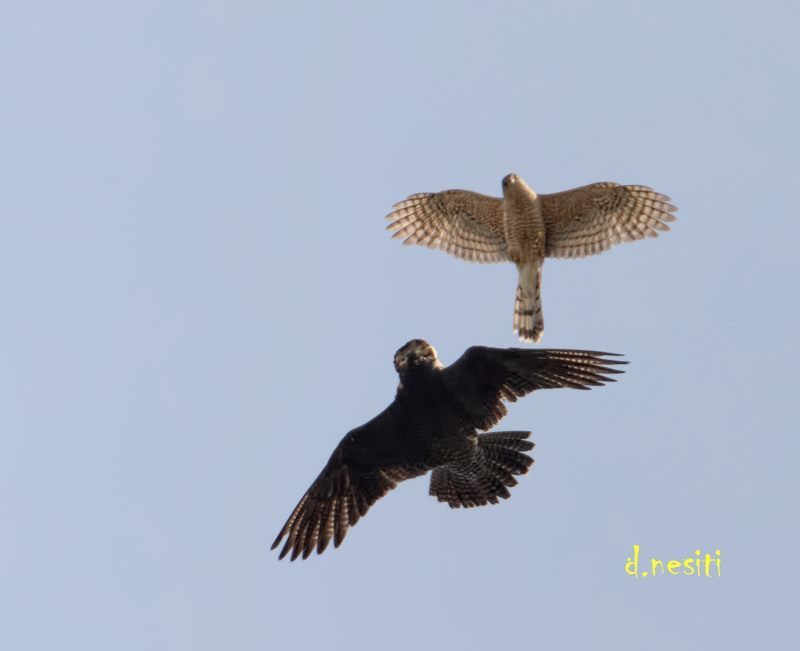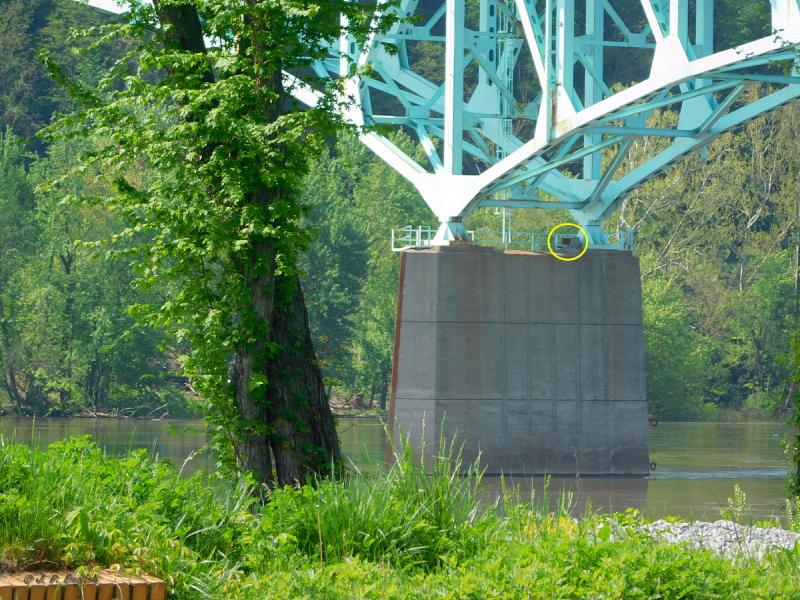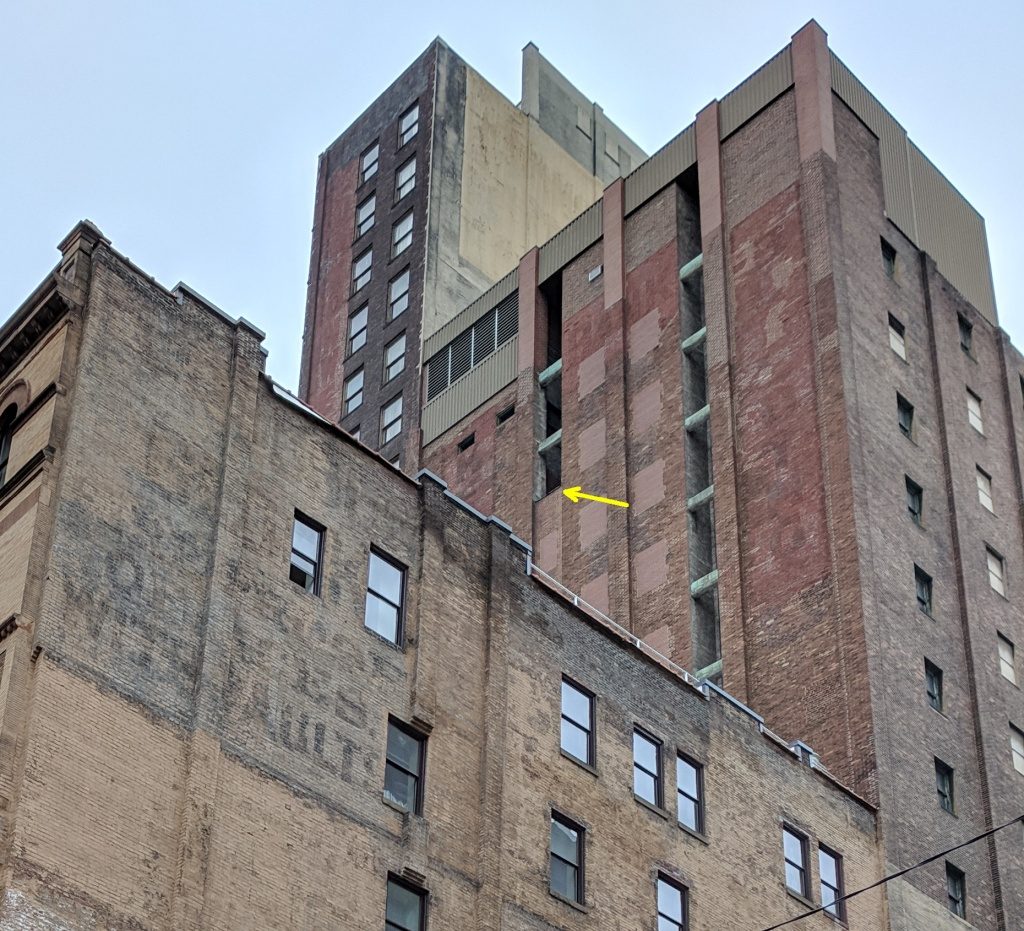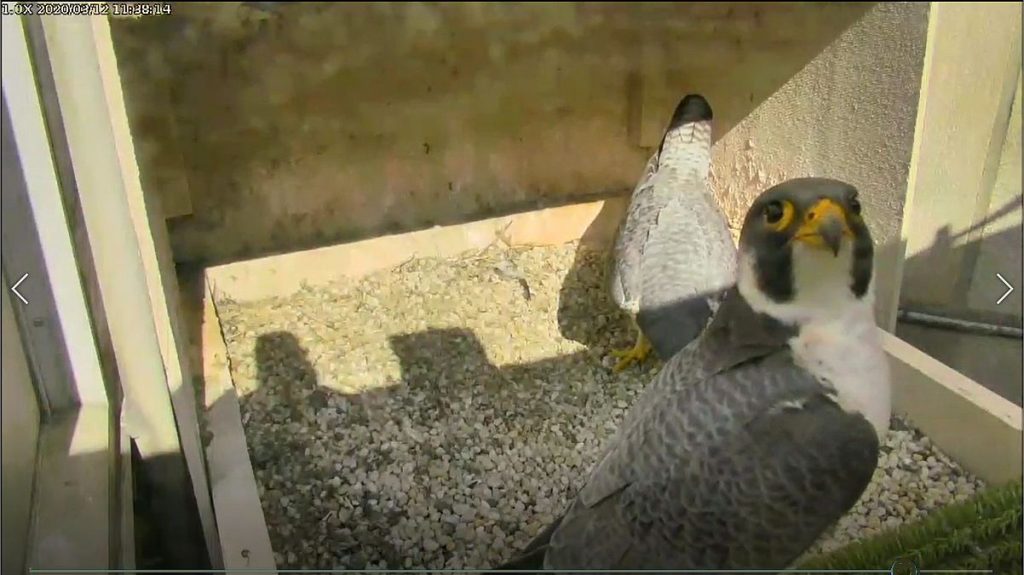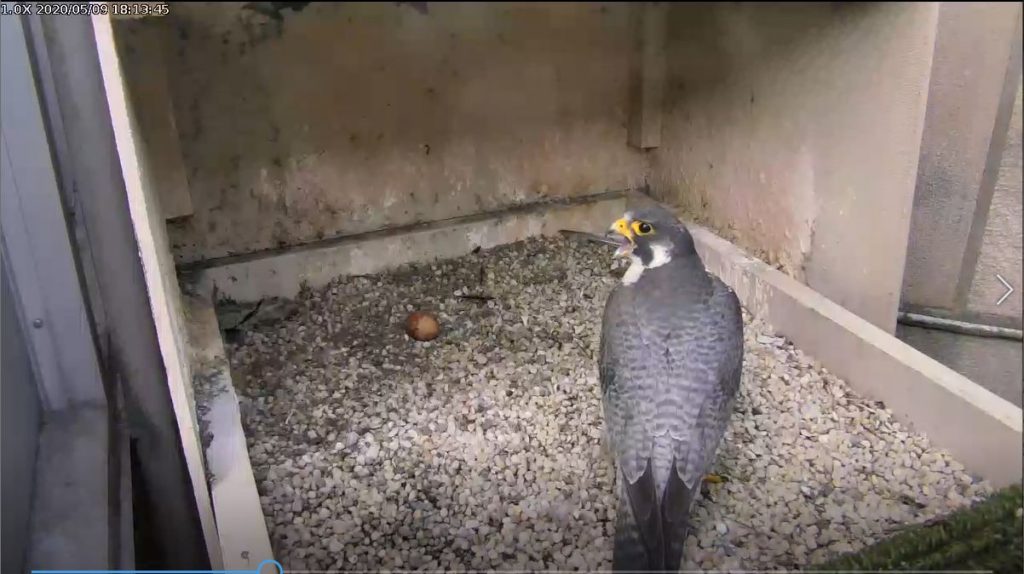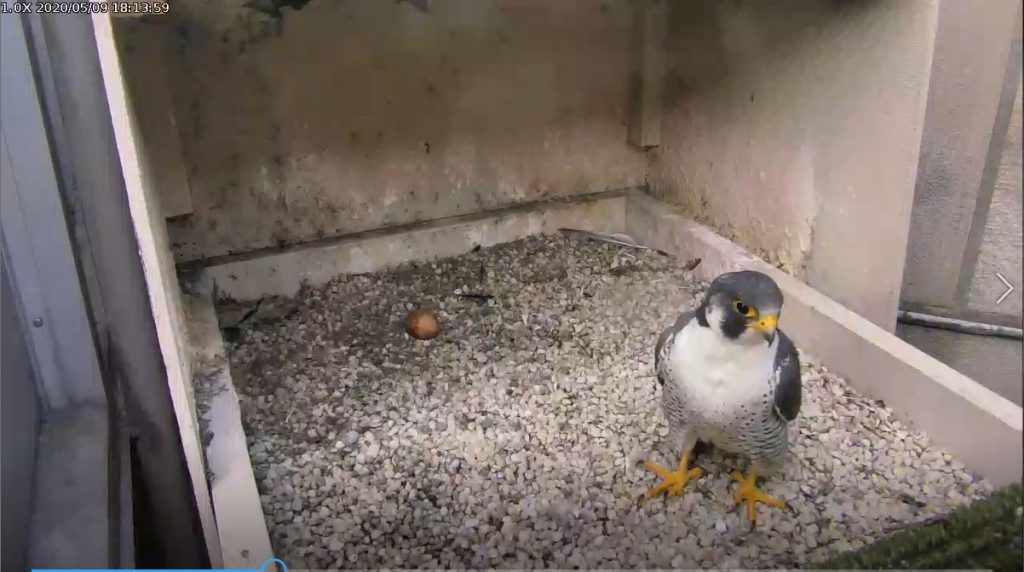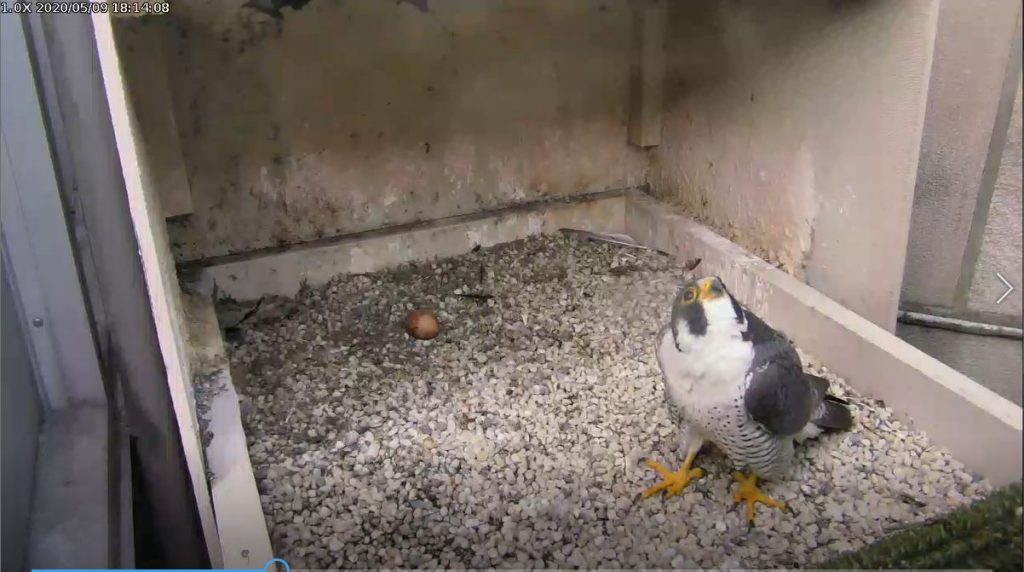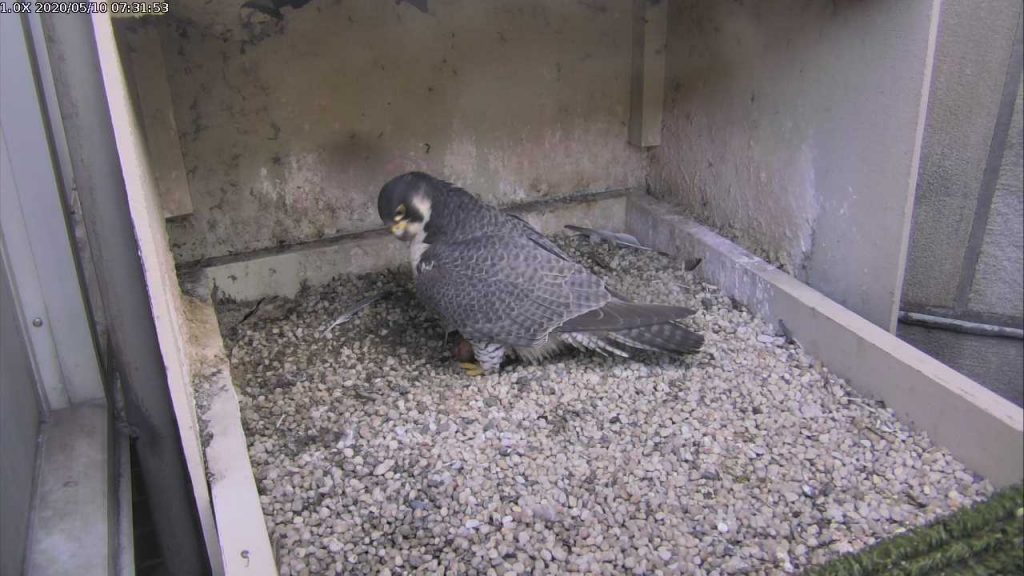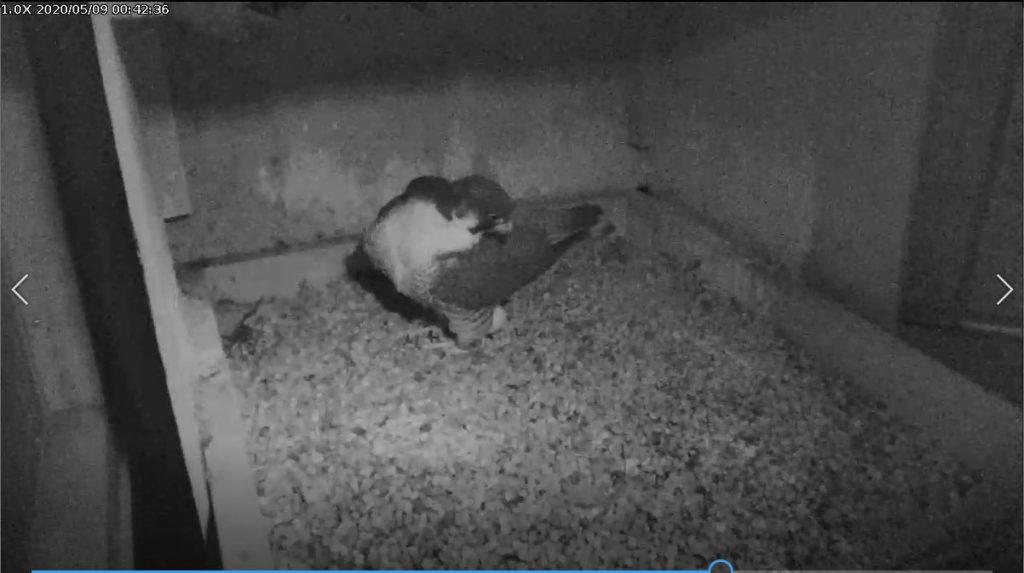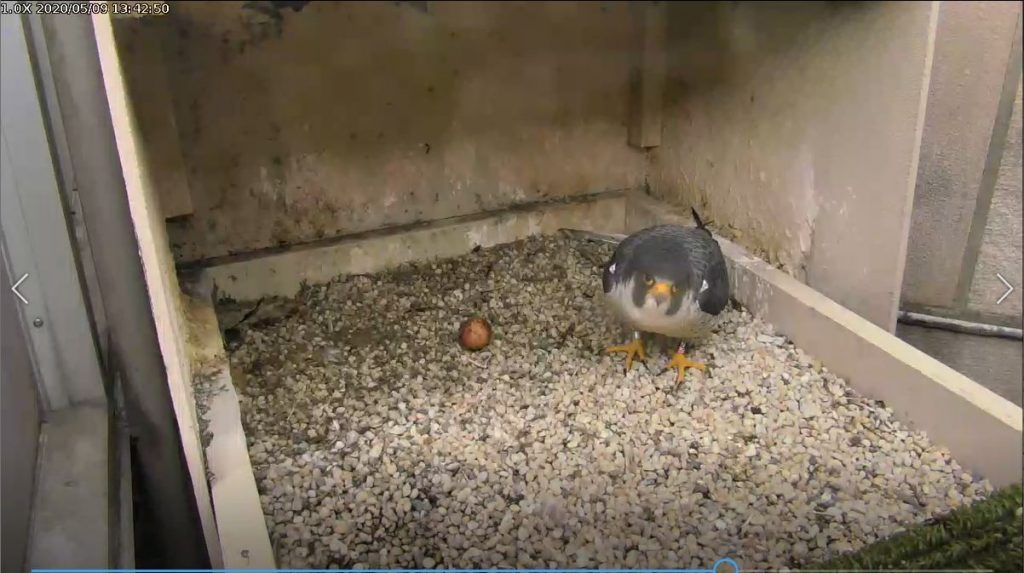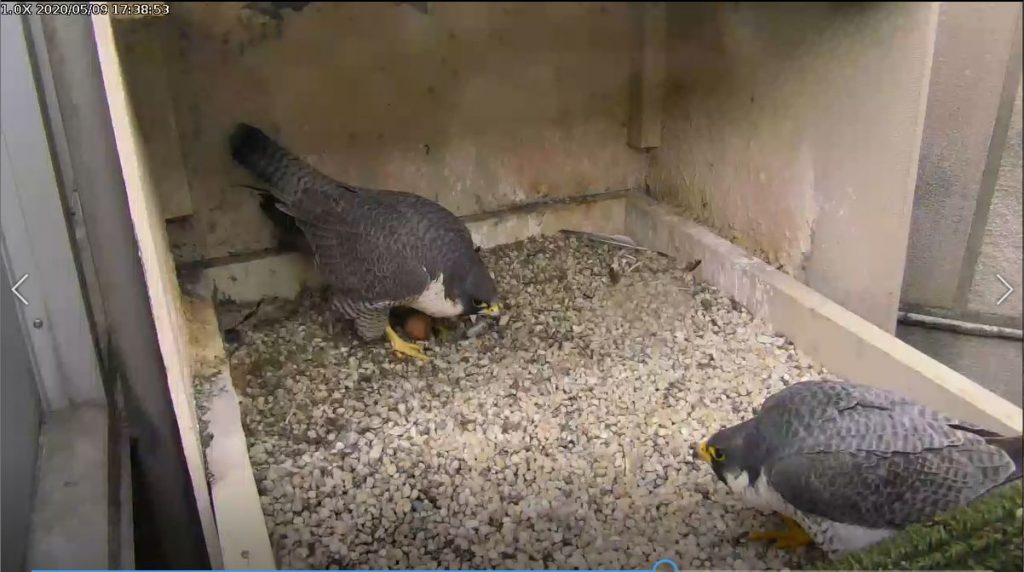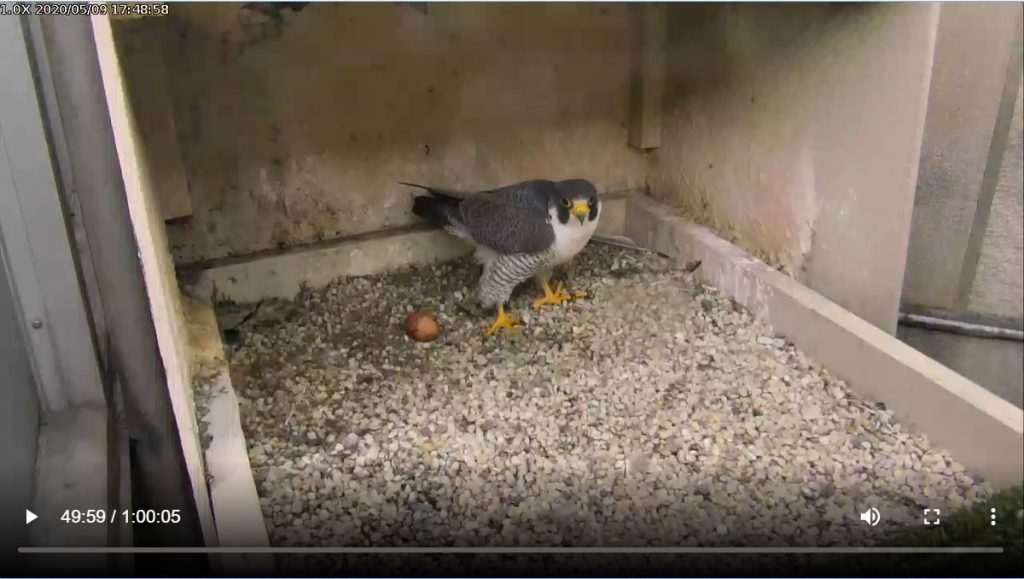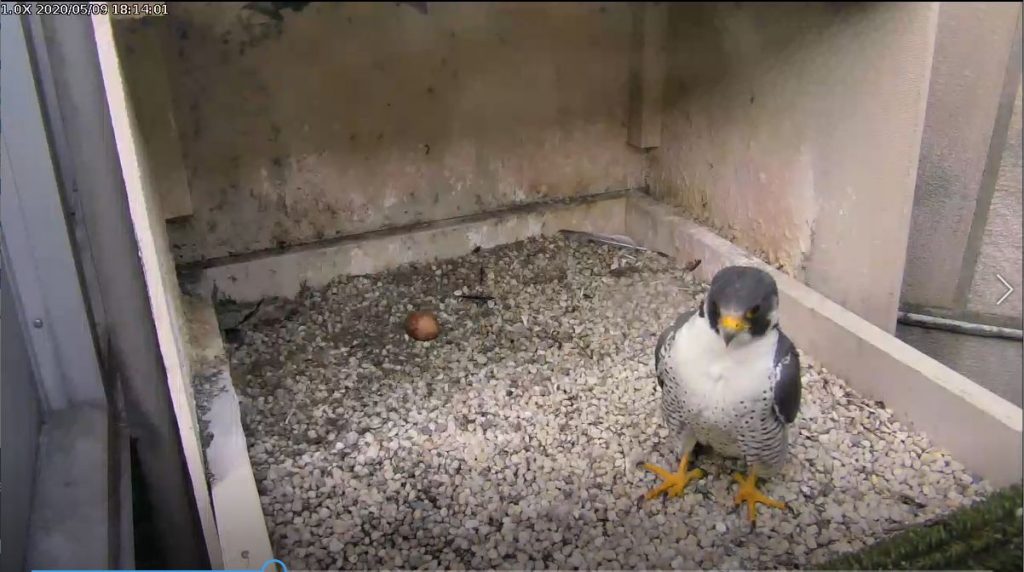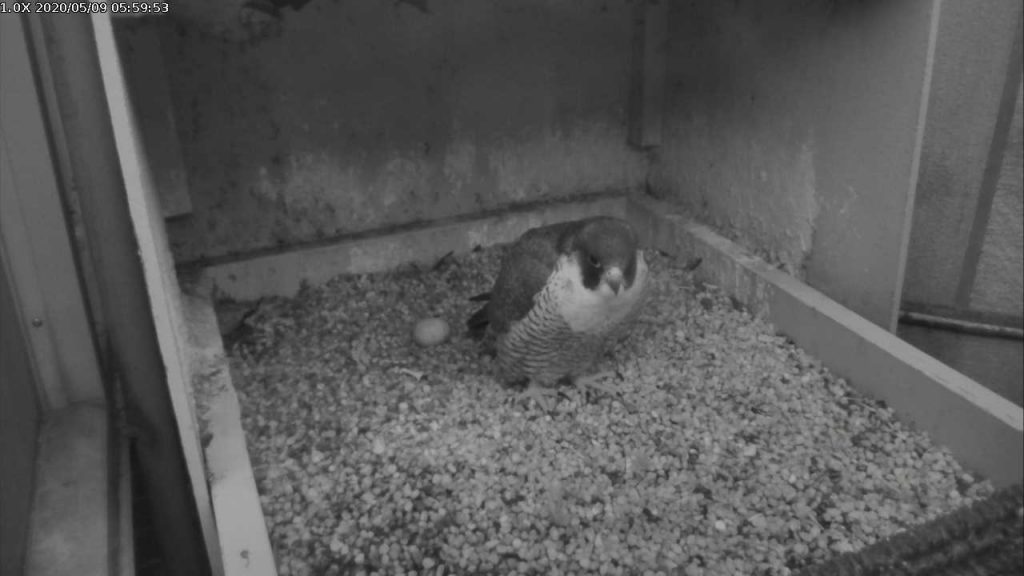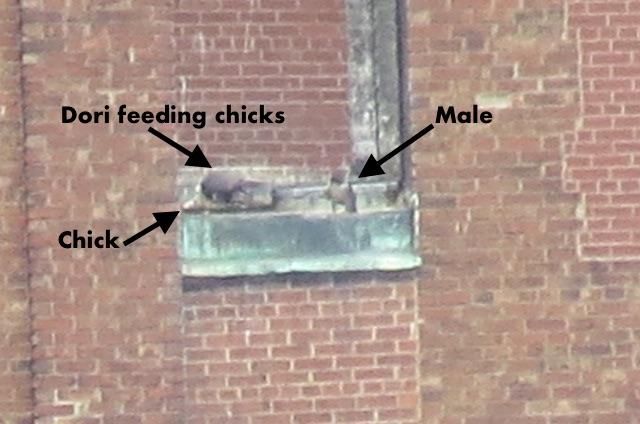
19 May 2020
The only way to see into the Downtown peregrine nest on Third Avenue is to observe it from Mt. Washington. Yesterday Lori Maggio took long range photos from the overlook and saw Dori, some chicks and Dori’s mate!
Here are her photos and observations:
I looked this afternoon between 1:30 and 2 pm and saw both Dori and the male in the nest and what I believe was Dori feeding the chick(s). When I first got up there I could only see Dori and what I believe a chick under her. When I looked a few minutes later I saw both adults. He was standing at the opening of the nest and it appeared as though Dori was feeding the chick(s). I imagine he brought the prey to her. After a few minutes in the nest he flew out. So it appears that she and her mate are raising at least one chick. I have included some pictures and one of what the nest site looks like empty so you can compare.
— email from Lori Maggio, 18 May 2020
For comparison, here’s the nest site at other times of year when there are no peregrines nesting in it.
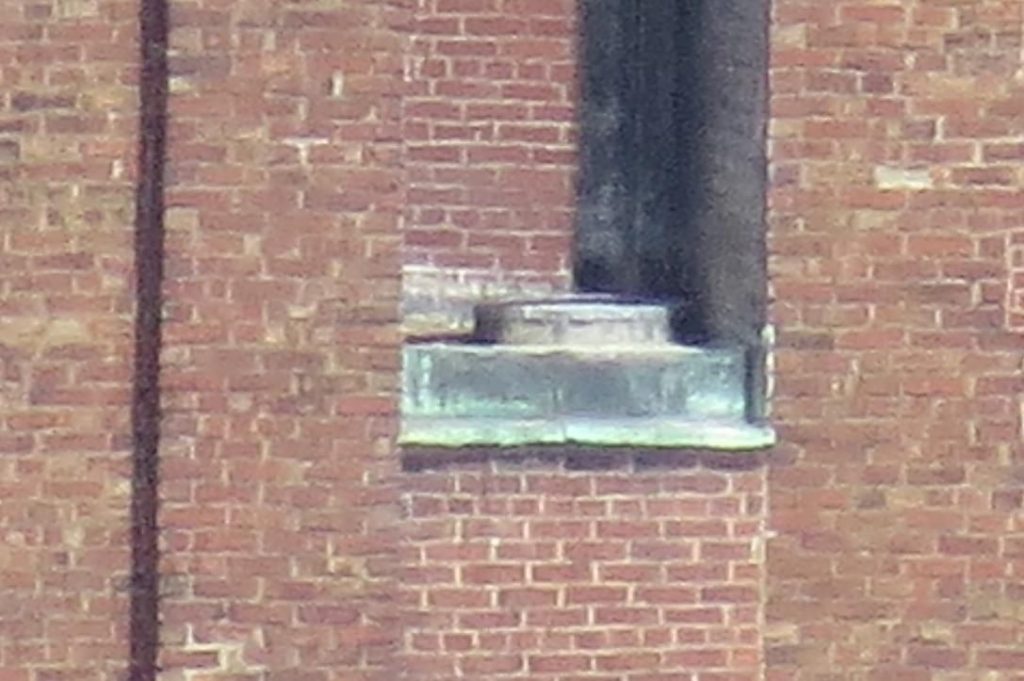
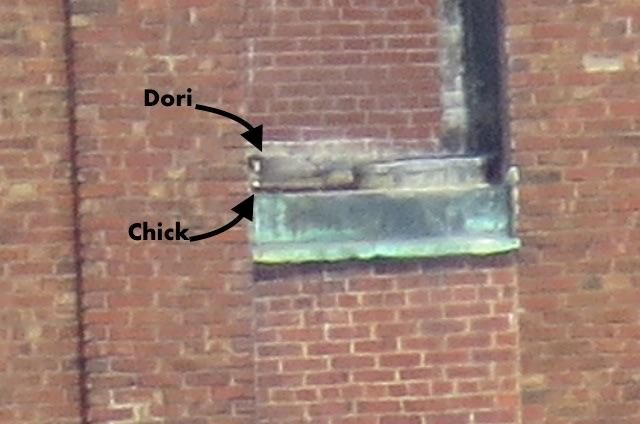
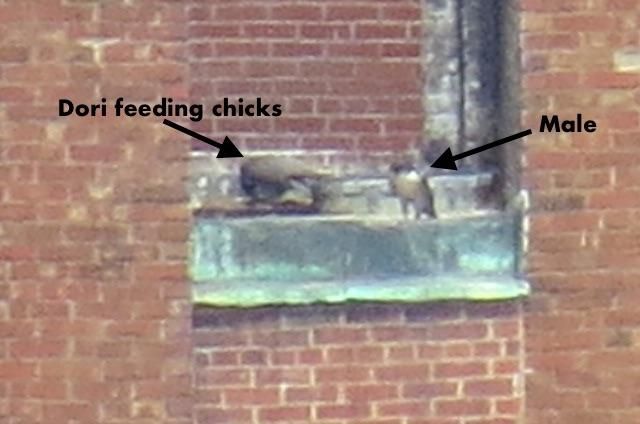
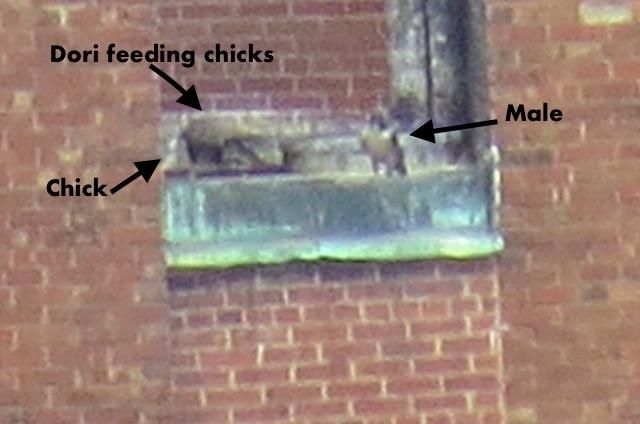
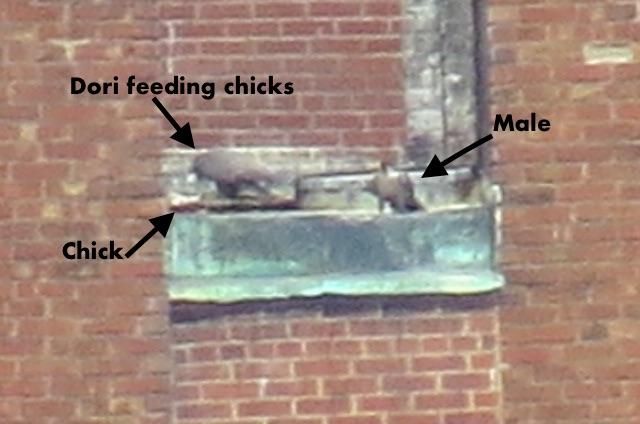
Yay! There are peregrine chicks Downtown!
Thank you, Lori, for the photos.
(photos by Lori Maggio)
